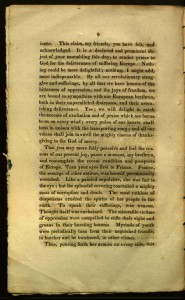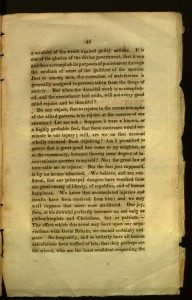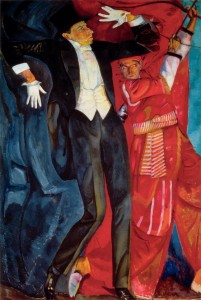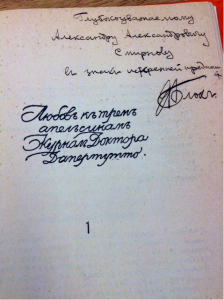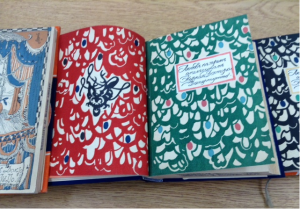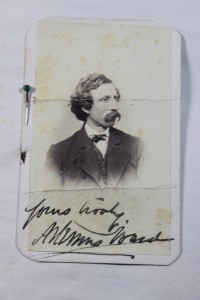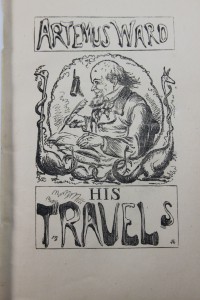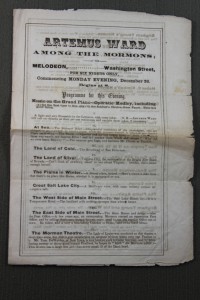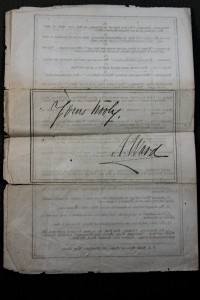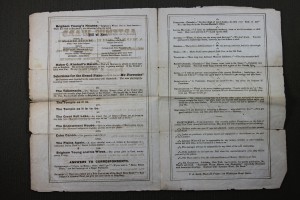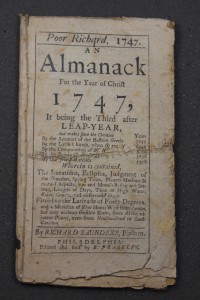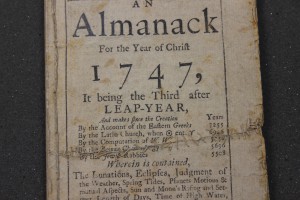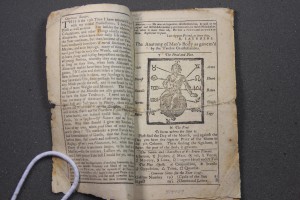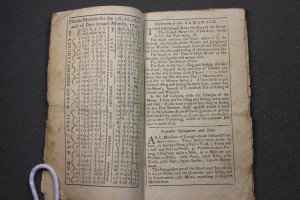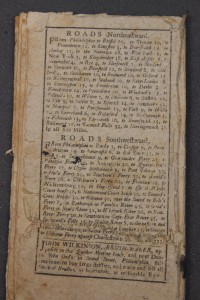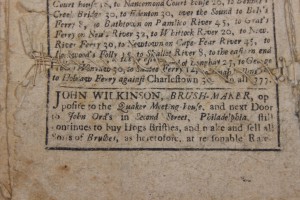In 2002, the Columbia Missourian suffered a server crash. Their backups were hold in an obsolete version of a CMS.
Read more at the Reynolds Journalism Institute blog: Saving the news: When your server crashes, you could lose decades of digital news content – forever
Resources and Services
Book with Personality-Sneak Peek 4
Victoria, Queen of Great Britain
Leaves from the journal of our life in the Highlands, from 1848 to 1861…
This published journal contains excerpts from the personal accounts of Queen Victoria in the mid-19th century. Perhaps one of the most interesting details about this particular volume is the signature on flyleaf. It reads, “To Robert Downie from Victoria Queen. Sandringham Jan. 2 1872”. Scottish-born Robert Downie was a “footman” or “equerry” to Victoria’s son, Prince of Wales. Downie’s duty was to support the Prince in official duties and private life and may have also been responsible for the Royal horses. Downie, 47 years old at the time, must also have held a high rank in the military as it was a requirement of employment.
In the signature, Queen Victoria notes, Sandringham, a privately owned Royal residence located in Norfolk, England. The property was purchased in 1862, however, the Queen made her first visit to Sandringham in 1871, only a year before the book was signed.
The MU Libraries Receive Funding from Andrew W. Mellon Foundation for Recovery of Materials Damaged by Mold
COLUMBIA, Mo.− The University of Missouri (MU) Libraries have received $400,000 from the Andrew W. Mellon Foundation to support remediation or content replacement of materials damaged by an extensive mold outbreak in an off-site storage facility. This outbreak, discovered in October 2013, is presumed to have contaminated all of the approximately 600,000 volumes housed in that facility.
Partnerships with Washington University in St. Louis (WUSTL) and Missouri State University (MSU) will provide access to replacement copies of federal government documents and inter-library loan access to Missouri state materials, respectively. Subcontracts with these universities through this project will support the cataloguing, retrieving and preparing of relevant materials to share with MU Libraries on an as-needed basis. The funding also will help MU review the availability of online or print-ready copies of needed replacements through cooperation with membership organizations. WUSTL will benefit by regaining space vacated by federal documents transferred to MU, while MSU will benefit by having its Missouri state materials catalogued in order to provide access to MU and other area libraries.
“The MU Libraries are deeply grateful to the Mellon Foundation for their support of this project that leverages tools of digital librarianship to help preserve scholarship in traditional formats,” said MU Libraries Director Jim Cogswell. “Institutional partnerships will enable the preservation of regional documents collections. The Mellon Foundation funding will allow MU Libraries to remediate mold for key groups of materials, work effectively with partner institutions for resource sharing, provide continued access to needed content of the damaged materials, and support part of the recovery effort.”
MU Libraries also will spend up to $600,000 from a self-insurance fund; additional sources are being explored. MU Libraries has contracted with a company for remediation services and negotiated for rental of two storage spaces, one in which pre-treated materials will be stored until they are cleaned, and one for storage of the remediated materials. As a longer-term solution, the Libraries are working with University of Missouri (UM) System's risk and insurance management department to develop a new strategy for fully insuring all collections, including those in storage, and will work with campus and UM System leadership to restore a plan for building an expansion to an existing storage facility and to accelerate fund allocation for its construction.
Books with Personality-Sneak Peek 3
Girolamo Mercuriale
De arte gymnastica…, 1577
This title loosely translates to “Of Jerome Mercvrialis the Art of gymnastics of book six: in which exercises of all kinds of ancient, places, modes, faculties. In short, whatever pertains to the exercises of the human body, carefully explained.”
Six books on the art of gymnastics is the oldest known book on physical culture and sports medicine. This particular book has survived 437 years and has a story to tell. Throughout the book there are many bookworm trails, brown foxing, tears, and a broken spine. By the looks of it, the life of the book seems to have been pretty rough, but useful. There are notes and underlining by a reader, possibly used as a study tool, but what is most interesting are the images. Classically inspired plates show images of men wrestling, fighting, bathing and exercising throughout the volume. It appears someone with access to the book took ink to paper, covering many of the male figures’ pelvic areas. We can only speculate why this was done. Could it be someone felt the images were not modest enough and were compelled to censor the images? Is the defacing akin to a more modern prank, such as drawing a mustache on a photograph? Was someone just plain bored? The reason may remain a mystery.
Napoleon, the War of 1812, and July 4, 1814
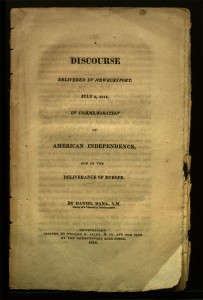 Have you ever wondered what Independence Day celebrations were like 200 years ago? For many people, the main event at Fourth of July festivities wasn't a fireworks display or even a concert; it was a sermon. The Fourth of July Orations Collection offers a glimpse into these commemorations and provides important documentation of American politics and identity from 1791 to 1925.
Have you ever wondered what Independence Day celebrations were like 200 years ago? For many people, the main event at Fourth of July festivities wasn't a fireworks display or even a concert; it was a sermon. The Fourth of July Orations Collection offers a glimpse into these commemorations and provides important documentation of American politics and identity from 1791 to 1925.
On July 4, 1814, the United States was still embroiled in the War of 1812. As we saw last year, the American military was poorly trained and equipped compared to the British forces, but by the middle of 1814, its outlook was beginning to improve. The American navy controlled part of the Great Lakes, plagued British shipping, and captured British warships. American army troops repelled attacks from the British and allied Native American tribes.
Throughout early 1814, many Americans were also paying close attention to the situation in Europe. Napoleon was forced to abdicate and exiled to Elba in April of that year – an event that many Americans celebrated, even though it was a victory for their enemy.
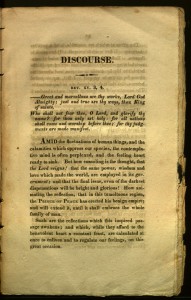 Daniel Dana noted the problematic nature of the European peace in an 1814 Fourth of July speech. Dana was a minister in Newburyport, MA, a member of the influential Dana family, and, for a short time, president of Dartmouth College. In his speech, he celebrates the "deliverance of suffering Europe" from "France, the scourge of other nations" (8). However, he acknowledges the awkward position this created for the United States:
Daniel Dana noted the problematic nature of the European peace in an 1814 Fourth of July speech. Dana was a minister in Newburyport, MA, a member of the influential Dana family, and, for a short time, president of Dartmouth College. In his speech, he celebrates the "deliverance of suffering Europe" from "France, the scourge of other nations" (8). However, he acknowledges the awkward position this created for the United States:
Do any object, that to rejoice in the recent triumphs of the allied powers, is to rejoice at the success of our enemies? Let me ask: Suppose it were a known, or a highly probable fact, that these successes would terminate in our injury; still, are we on that account wholly excused from rejoicing? Am I permitted to grieve that a great good has come to my neighbor, or to the community, because thereby some degree of inconvenience accrues to myself? No; the great law of love calls me to rejoice. (15)
Read the entirety of Dana's speech online. The entire Fourth of July Orations Collection is available at the University of Missouri Digital Library, and also in traditional format in the Special Collections Reading Room.
Updated hours at the Information Desk
Starting July 7th, you can reach a librarian anytime from 9am to 5pm. However, there will be some changes at the information desk:
From 9am to 5pm, you can instantly reach a librarian via email, chat, or by phone–see contact details below.
From the hours of 10am to 2pm, you can additionally get in touch with a librarian in person at the information services desk. Outside of these hours, feel welcome to ask for a librarian at the circulation desk–we will be happy to assist you as we are available or by appointment.
This is planned to continue until the end of the summer term. For updates to this schedule, please keep an eye on the news feed on the HSL webpage.
Need help with a search? Stuck with an Endnote concern? The Health Sciences Library is here to help you:
Phone: (573) 882-0471
Email: AskLibrary@health.missouri.edu
Feeling chatty? Talk with us here: https://libraryguides.missouri.edu/contact
Have a wonderful and safe Independence Day Holiday!
Autograph of Alexander Blok
Sometime ago, while preparing books for visitors, I opened the first issue of the magazine Love for Three Oranges, January 1914, and was surprised to see Alexander Blok’s autograph on the title page. The slim, almost homemade, magazine was published by Vsevolod Meyerhold (1874 – 2 February 1940), a brilliant and provocative Russian theatre director, under the nom de guerre Doctor Dapertutto, and the playful, theatrical, and sometimes clownesque nature of the magazine didn’t immediately associate in my mind with the tragic figure of Blok.
One of the most famous Russian poets, Blok (1880-1921) was born in St. Petersburg to a refined, cultivated family of Russian gentry. The son, grandson and a son-in-law of the university professors, he was, by the definition of another poet, “the pampered child of a good home, who had been caressed by “tender women”, who, however, saw himself as an “orphaned outcast, and began to write most of his poems in the name of the man who was desperate, unsheltered, and buffeted by the wind” *
Poet of doom and gloom, he enjoyed the unsurpassed admiration of his contemporaries, and perhaps of one or two generations thereafter.
It is impossible to convey the bewitching music of his poetry in translation, but I’d like to give this small example:
A night, a street, a lamp, a drugstore
A meaningless and dismal light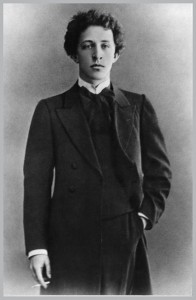
A quarter century outpours –
It’s all the same. No chance to flight.
–
You’d die and rise anew, begotten.
All would repeat as ever might:
The street, the icy rippled water,
The store, the lamp, the lonely night.
Or another version of the same:
Some night and street, some chemist's lantern
Is bringing senseless weary light.
Well, nothing changes, that's one pattern,
Live extra twenty-five and find.
You die to start a life all over,
All things repeat as did before.
That night, cold waters at quay border,
That light, that street, that chemist's store. (October 10th, 1912)
Personally, I have never fallen under the spell of Blok’s poetry, even in my youth, clearly preferring to him Gumilev and Khodasevich at the beginning, later Pasternak and Mandel’shtam. But I happen to know people who could cite Blok’s poems by heart for a long time nonstop. Cultivated and highly intelligent women and men, they regarded him with almost divine reverence and admiration, not quite comprehensible to me. Even Nabokov wrote that Blok was “by far the greatest poet of the first two decades of this (20th) century”**
The inscription on the title page says: “to much esteemed Alexander Alexandrovich Smirnov as a token of sincere devotion. A. Blok.”
The addressee of this autograph was three years Blok’s junior and his complete name-sake. At 31, Alexander Smirnov (1883-1962) was a well-known and well placed philologist, specialist in Celtic, French and Spanish literatures of the Renaissance, professor at St. Petersburg University, closely acquainted with, and well established in, the circles o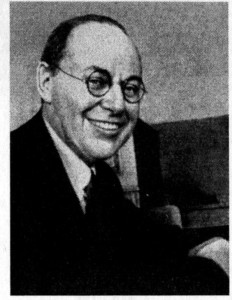 f the poets of the Russian Silver Age.
f the poets of the Russian Silver Age.
At times I think that one of the more interesting aspects of work in the Special Collections is that intoxicating thought of the many hands that had leafed through this or that old book and with whom you therefore are “in touch” throughout times and across continents. In this case, we happen to know the principal actors: Blok, Smirnov, and Meyerhold. In January 1914 they were all young, immensely gifted, looking forward to the future. The World War will begin only at the end of July***, then the atrocities of the revolution and the Bolshevik coup d’état would pounce upon them and everybody else in Russia, and their lives will be forever changed. Blok will stop writing and will drink himself to death soon thereafter; Meyerkhold will be arrested, brutally tortured by Stalin’s henchmen and finally executed in 1940; and only Smirnov will be living a long and seemingly uneventful life of a respected professor and scholar, loyal to the Soviet regime. But this small book, jolly and pert, is our window onto the world of a hundred years ago, where we can be very close to the trio of colorful characters, seemingly just one touch removed.
*Kornei Chukovsky, “Alexander Blok as man and poet”, Ardis, 1982
**Vladimir Nabokov, Eugene Onegin, III:525, 1951-55
*** World War I started on 28 July 1914 and lasted until 11 November 1918
Books with Personality-Sneak Peek 2
Artemus Ward
Artemus Ward; his travels …, 1865
Charles Farrar Browne, who wrote under the pen name “Artemus Ward”, was an acclaimed American writer, lecturer, and humorist in the 19th century. Ward was a favorite of many notable men, including President Lincoln and Mark Twain and contributed writings to popular magazines such as Punch and Vanity Fair. This copy of “Artemus Ward; his travels.” contains a signed photo vignette fastened to the flyleaf with a straight pin. Also included is a signed theater program from a performance of, “Artemus Ward, among the Mormons” at the Melodeon in Boston, MA. Both pieces are signed “Yours Trooly, Artemus Ward” with an intentional misspelling of “truly” as was consistent Ward’s writing style.
Books with Personality-A sneak peek!
In August 2014, Special Collections will mount a display entitled, “Books with Personality” in the Ellis Library Colonnade. Over the next few weeks, we will give you a sneak peek to see what’s coming. We hope you enjoy!
Benjamin Franklin
Poor Richard, 1747 : an almanack for the year of Christ, 1747, it being the third after leap-year …
This copy of Poor Richard’s Almanack was published in 1746 during the years Benjamin Franklin superintended the printing himself. The almanac includes calendars, weather predictions, astronomical calculations and astrological information. Franklin also shared poems, jokes, and offered wisdom to share with young persons. This copy bears evidence of the value someone has placed on the almanac. There are tears in four leaves which have been very carefully hand sewn. Although we cannot date the time of repair, the mending must have been made over a century ago.
ZPH Special Issue on Systematic Reviews
Check on the Zoonoses & Public Health Issue on Systematic Reviews and Meta-Analysis in Animal Agriculture and Veterinary Medicine !
See especially the article on searching the literature, written by Kate Anderson, Head of the Zalk Veterinary Medical Library (aka yours truly…):
O’Connor AM, Anderson KM, Goodell CK, Sargeant JM. Conducting systematic reviews of intervention questions I: Writing the review protocol, formulating the question and searching the literature. Zoonoses and Public Health 2014;61 Suppl 1:28-38 doi: 10.1111/zph.12125. PMID: 24905994.
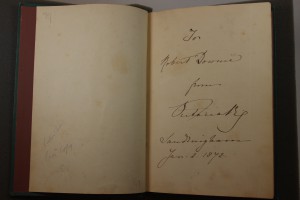
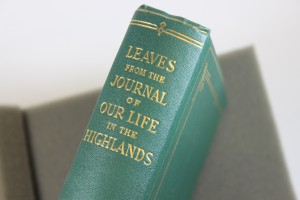
![IMG_0997[1]](http://library.missouri.edu/news/wp-content/uploads/sites/53/2014/06/IMG_09971-e1403817403904-200x300.jpg)
![IMG_0992[1]](http://library.missouri.edu/news/wp-content/uploads/sites/53/2014/06/IMG_09921-300x200.jpg)
![IMG_0985[1]](http://library.missouri.edu/news/wp-content/uploads/sites/53/2014/06/IMG_09851-e1403817440656-200x300.jpg)
![IMG_1004[1]](http://library.missouri.edu/news/wp-content/uploads/sites/53/2014/06/IMG_10041-e1403817368628-200x300.jpg)
![IMG_0999[1]](http://library.missouri.edu/news/wp-content/uploads/sites/53/2014/06/IMG_09991-300x200.jpg)
![IMG_1009[1]](http://library.missouri.edu/news/wp-content/uploads/sites/53/2014/06/IMG_10091-300x200.jpg)
![IMG_0982[1]](http://library.missouri.edu/news/wp-content/uploads/sites/53/2014/06/IMG_09821-300x200.jpg)
